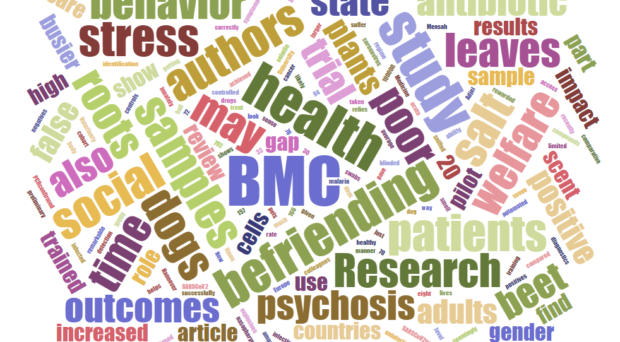
BMC Health Services Research – Racial/ethnic and educational inequities in restrictive abortion policy variation and adverse birth outcomes in the United States
Over the last decade, states have enacted a variety of restrictive abortion policies at a rapidly increasing rate. Since 2011, nearly 500 abortion restrictions have been enacted in states around the U. S, increasing the hostility of state environments towards abortion access. According to the Guttmacher Institute, over half of states are hostile to abortion rights, and 58% of women aged 15–44 reside in states considered hostile or very hostile to abortion services, meaning states had four or five (hostile), or six (very hostile) restrictive abortion policies in place. Using a state-level abortion restrictiveness index comprised of 18 restrictive abortion policies, the authors conducted a retrospective longitudinal analysis examining whether race/ethnicity and education level moderated the relationship between the restrictiveness index and individual-level probabilities of preterm birth (PTB) and low birthweight (LBW). Findings demonstrate that Black individuals at all educational levels and those with fewer years of education disproportionately experienced adverse birth outcomes associated with restrictive abortion policies. Restrictive abortion policies may compound existing racial/ethnic, socioeconomic, and intersecting racial/ethnic and socioeconomic perinatal and infant health inequities.
BMC Oral Health – Development of a secondary school-based digital behaviour change intervention to improve tooth brushing
Dental caries in adolescents remains a significant public health problem with few oral health promotion interventions aimed at reducing dental caries in secondary school-aged students. Previous oral health and mobile health (mHealth) research has suggested the need for the development of a school-based behaviour change intervention incorporating a digital component. This study aimed to describe the development process of a behaviour change intervention to improve the oral health of students aged 11–16 years attending secondary schools in the UK. A six-step process was used to develop the complex intervention informed by behaviour change theory and involving students, young people, parents and teachers in the process. Here an intervention to improve the oral health of secondary school students through improved tooth brushing was developed based on behaviour change theory and work with young people, parents and school staff.
BMC Psychology – Size and shape of plates and size of wine glasses and bottles: impact on self-serving of food and alcohol
Excess consumption of alcohol and energy-dense foods are two significant preventable causes of a range of non-communicable diseases globally, including heart disease and many cancers. Interventions that involve changing cues in the immediate physical environments that influence consumption could contribute to reducing excess food and alcohol consumption altering the size of tableware, plates, glasses, packaging and bottles. There is considerable uncertainty, however, around the potential effects of different sizes and shapes of tableware on how much food and alcohol people self-serve. These studies aimed to estimate the impact of: 1. Plate size and shape on amount of food self-served; and 2. Wine glass and bottle size on amount of wine self-poured. The authors found that smaller tableware (i.e. plates and wine glasses) decreased the amount of food and wine self-served in an initial serving. Studies are therefore warranted that assess initial as well as subsequent servings, and consumption behaviour—including detailed meal microstructure behaviours.
BMC Public Health – How should we evaluate sweetened beverage tax policies? A review of worldwide experience
Over 45 jurisdictions globally have implemented sweetened beverage taxes. Researchers and policymakers need to assess whether and how these taxes change beverage demand and supply, their intended and unanticipated health, economic and equity impacts. Lessons from such evaluations can maximise the policies’ success and impact on non-communicable disease prevention globally. There is ample evidence showing that consumption of sweetened beverages is strongly and positively associated with the prevalence of non-communicable diseases (NCDs), including obesity, type 2 diabetes, cardiovascular diseases and certain cancers, as well as all-cause mortality. In this article, rather than provide a review of the findings of existing evaluations, the authors ask: what are the lessons we can learn from sweetened beverage tax evaluations?
BMC Geriatrics – Rehabilitation potential in older people living with frailty: a systematic mapping review
Following periods of acute ill-health and injury, older people are frequently assessed and provided with rehabilitation services. Healthcare practitioners are required to make nuanced decisions about which patients are likely to benefit from and respond to rehabilitation. The clinical currency in which these decisions are transacted is through the term “rehabilitation potential”. The aim of this study was to explore information about rehabilitation potential in older people to inform the development of an evidence-based assessment tool. 13,484 papers were identified and 49 included in the review. Current approaches to rehabilitation potential provide a snapshot of an individual’s abilities and conditions which fail to capture the dynamic nature and fluctuations associated with frailty and rehabilitation. New approaches to measures abilities over time are required which allow for the prognostication of outcomes and potential benefits of rehabilitation interventions for older people living with frailty.
Comments